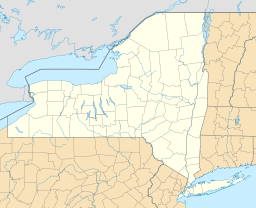Moe Pond facts for kids
Quick facts for kids Moe Pond |
|
|---|---|
| Location | Otsego County, New York |
| Coordinates | 42°43′04″N 74°56′42″W / 42.71778°N 74.94500°W |
| Primary outflows | Willow Brook |
| Catchment area | 185.8 acres (75.2 ha) |
| Max. length | 2,264 ft (690 m) |
| Surface area | 39.5 acres (16.0 ha) |
| Average depth | 5.97 ft (1.82 m) |
| Max. depth | 12.47 ft (3.80 m) |
| Water volume | 75,389,156 US gal (285,379.00 m3) |
| Surface elevation | 1,627 feet (496 m) |
| Settlements | Cooperstown |
Moe Pond is a small man-made lake in Otsego County, New York. It is located northwest of Cooperstown.
Water from Moe Pond flows south into Willow Brook. This brook then flows into Otsego Lake. East of Moe Pond, you can find Mount Ovis. To the southeast, there is Hannah's Hill.
The pond was named after Henry Allen Moe. He was once a member of the New York State Historical Association. Moe Pond was created in 1939. Today, the pond and the land around it are owned by the State University of New York at Oneonta (SUNY Oneonta). They use the area only for teaching and research.
Fish in Moe Pond
In 1995, scientists studied Moe Pond. They looked at the water's physical and chemical features. They also studied the living things in the pond. This type of study is called an ecological survey.
The survey found only two types of fish living in the pond: brown bullhead and golden shiner. Scientists believed there were too many golden shiners. This large number of shiners might have caused a drop in tiny water animals called zooplankton. When there are fewer zooplankton, there can be more algae, making the water less clear.
Scientists thought adding fish like smallmouth bass and largemouth bass might help. These bass could eat some of the shiners. However, in 1999, more studies found that some smallmouth and largemouth bass were already in Moe Pond. No one knew how they got there. It was thought they were put into the pond in the spring of 1999.


